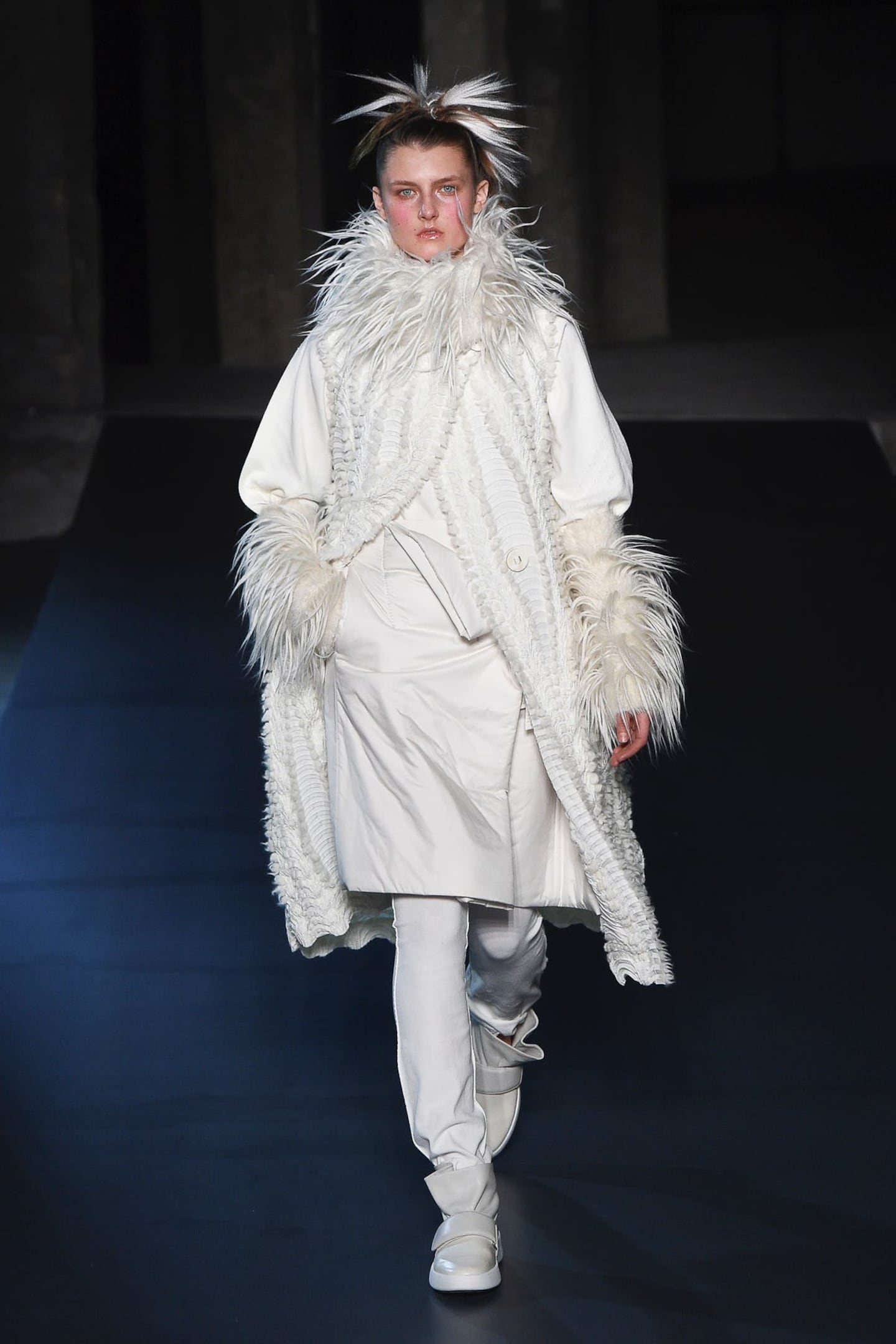
The Business of Fashion
Agenda-setting intelligence, analysis and advice for the global fashion community.

Agenda-setting intelligence, analysis and advice for the global fashion community.

PARIS, France — The Eighties are having a huge comeback this season in Paris and elsewhere. It's a matter of big shoulders, banana-shaped trousers and curvaceous hyper-bodies redesigned by clothes, of course. But it is mostly a matter of a codified depiction of womanhood: strong, assertive, sensual and in control.
Back then, the Miyake wonder woman was on a league of her own: capturing the zeitgeist with an all defining air of tribal futurism. The vision was so forward-thinking, it could easily be translated into the present tense, even better outside of the 1980s trend. It would surely make the Miyake identity more strongly felt.
Instead, what do we have? Challenging and utterly innovative fabrics shaped into cocoons that variously wrap the body depicting a rather sweet, kawaii idea of woman — or girl, to be accurate. Along the way, the strength, the stubborness and the allure got completely lost.
Designer Yoshiyuki Miyamae is doing ok. But he keeps focusing on the fabrics, forgetting that it is the vision of a woman translated into shapes that carries a house like this forward. It is a pity that all the Miyake innovation keeps being narrowed around pleats: it's a diminishing effort. It's time to dish out something bold again. Pleats, if necessary, will follow.
From where aspirational customers are spending to Kering’s challenges and Richemont’s fashion revival, BoF’s editor-in-chief shares key takeaways from conversations with industry insiders in London, Milan and Paris.
BoF editor-at-large Tim Blanks and Imran Amed, BoF founder and editor-in-chief, look back at the key moments of fashion month, from Seán McGirr’s debut at Alexander McQueen to Chemena Kamali’s first collection for Chloé.
Anthony Vaccarello staged a surprise show to launch a collection of gorgeously languid men’s tailoring, writes Tim Blanks.
BoF’s editors pick the best shows of the Autumn/Winter 2024 season.